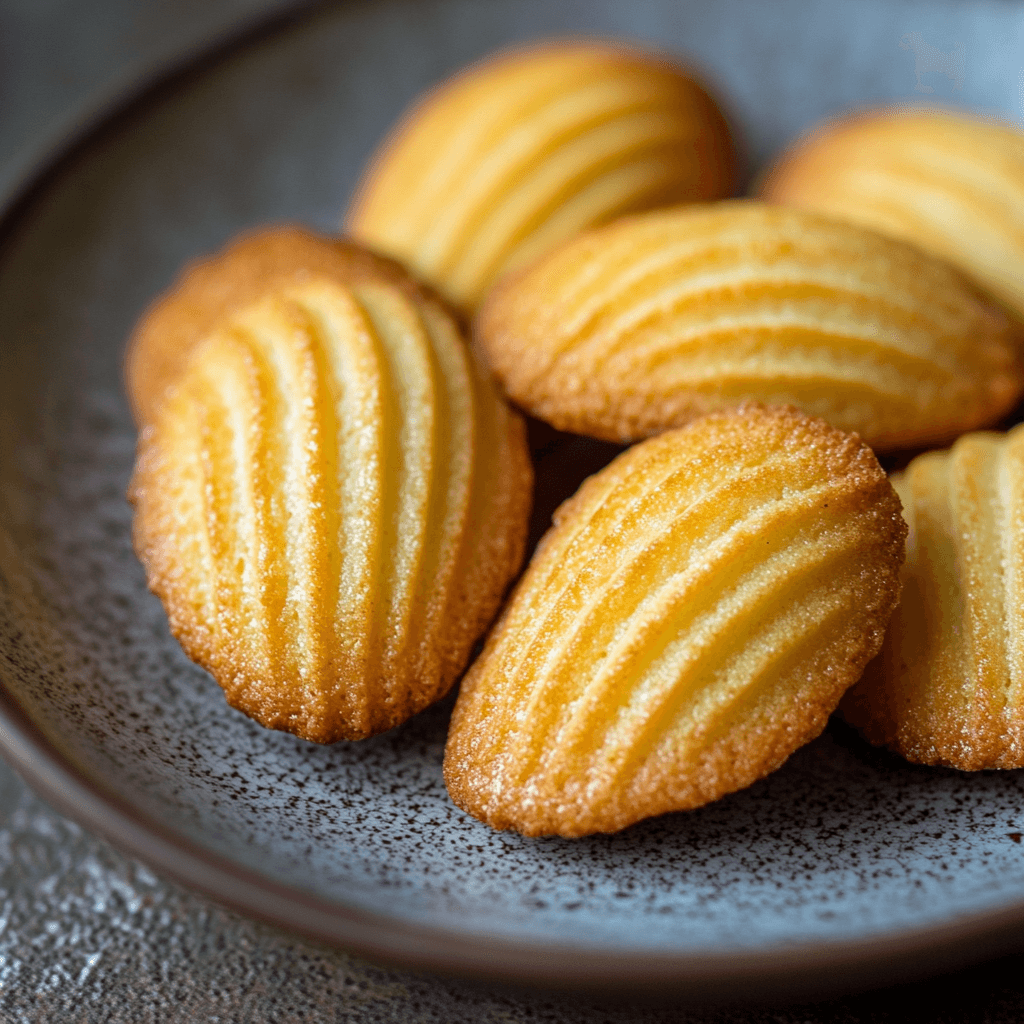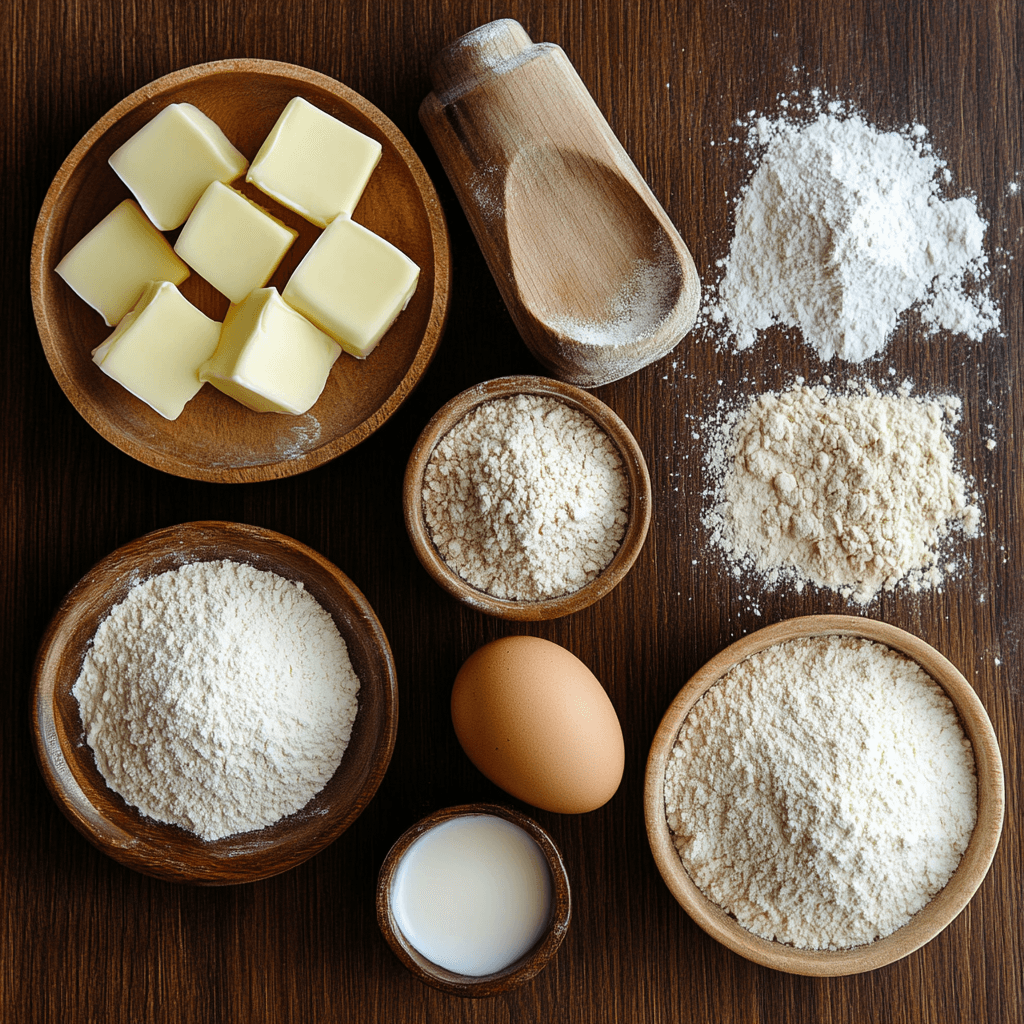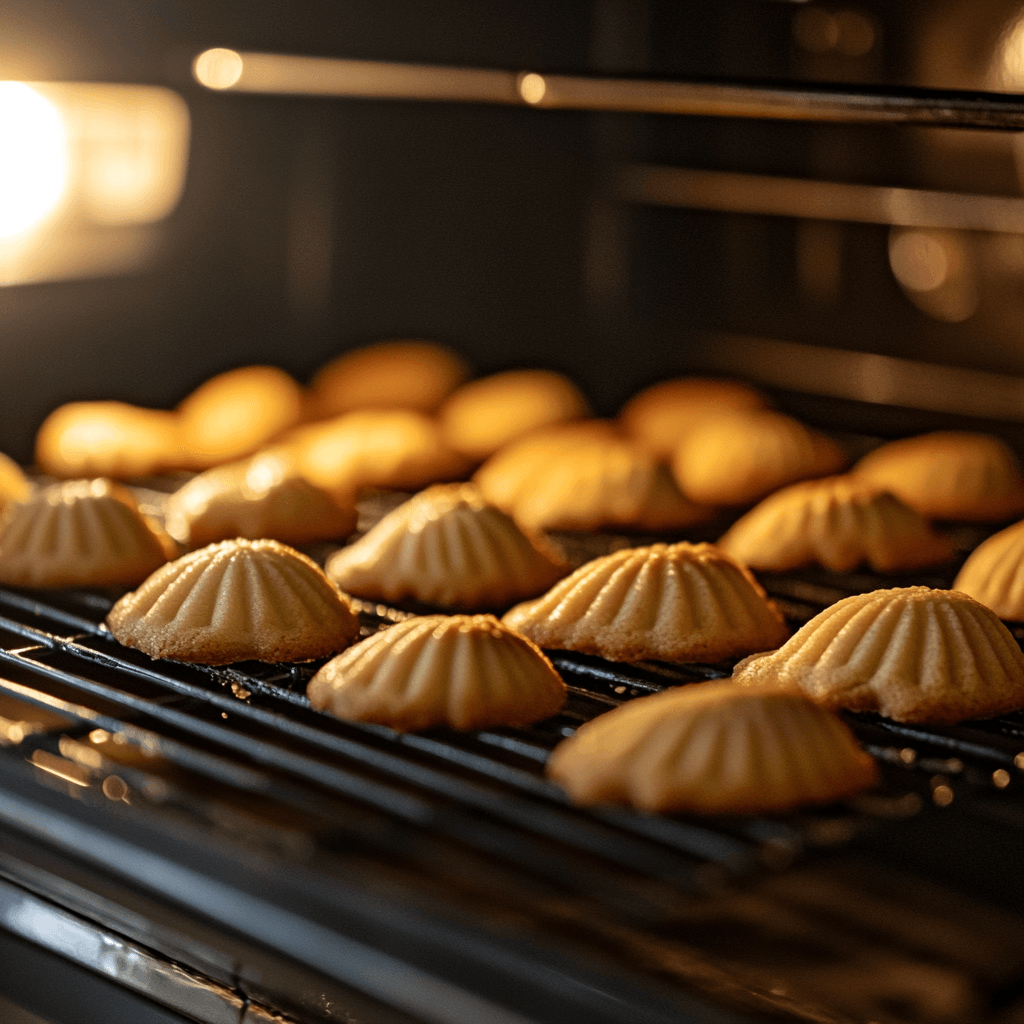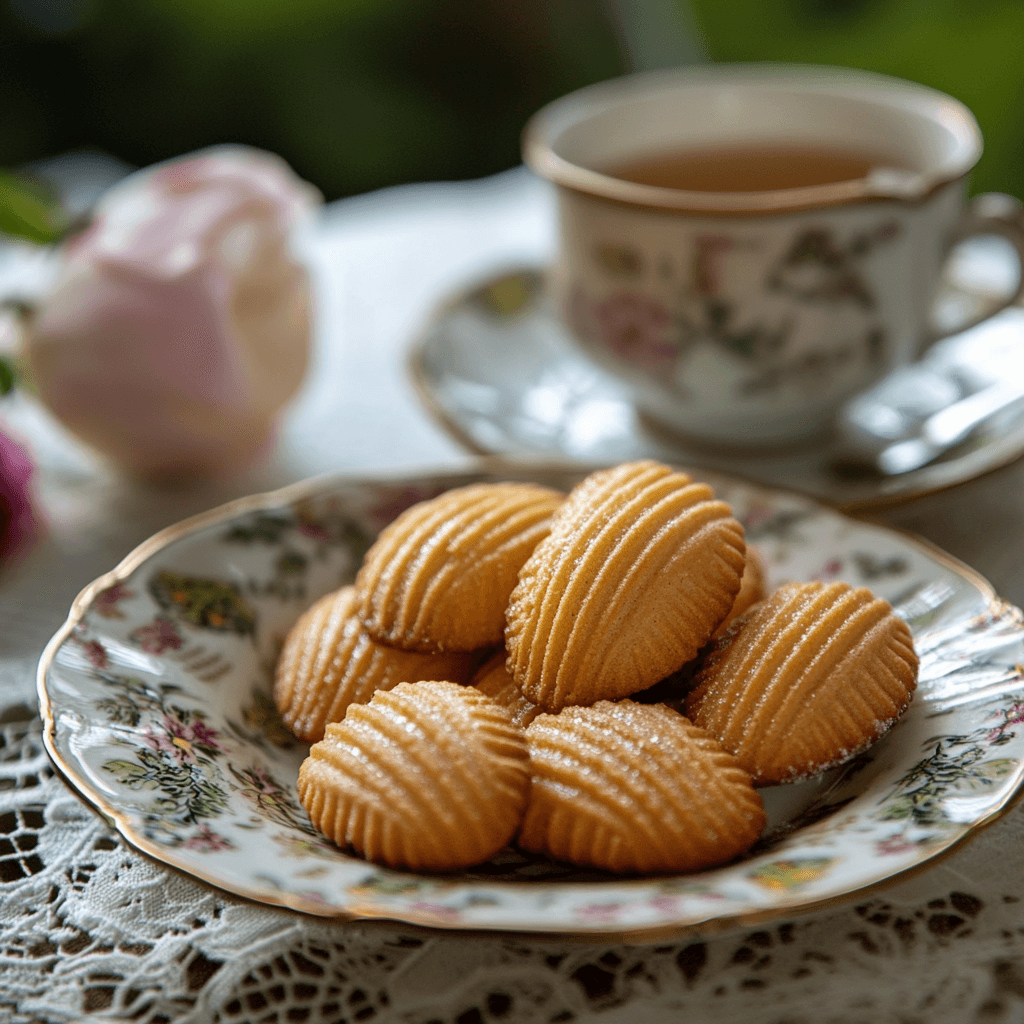Madeleine cookies are one of those timeless treats that always bring a touch of elegance to any gathering. These light, buttery, shell-shaped delights are a French pastry favorite, known for their soft texture and delicate flavor. In this article, we will guide you through a Madeline cookies recipe using cream, which will elevate the traditional Madeleine with an even richer, fluffier texture. Whether you’re making them for a special occasion or simply craving something sweet with your afternoon tea, this recipe will help you bake the perfect Madeleine cookies every time.
With a few simple steps and ingredients like heavy cream, unsalted butter, and vanilla extract, you’ll be able to master these delightful treats in your kitchen. You’ll also learn tips for making your Madeleine cookies recipe even better, such as how to get the signature Madeleine hump and keep them moist.

Ingredients and Instructions for Madeleine Cookies Using Cream
Here’s what you’ll need to make these delicious, soft Madeleine cookies:
| Ingredient | Amount | Notes |
|---|---|---|
| All-purpose flour | 1 cup | Sifted to ensure smooth batter |
| Eggs | 2 large | Room temperature ensures better consistency |
| Sugar | ¾ cup | Granulated sugar for a slight sweetness |
| Cream (heavy whipping) | ¼ cup | Use full-fat cream for richness and moisture |
| Unsalted butter | ½ cup | Melted, plus extra for greasing molds |
| Vanilla extract | 1 tsp | Adds depth to the flavor |
| Baking powder | ½ tsp | Helps the cookies rise and stay light |
| Salt | 1 pinch | Balances the sweetness |
Table of Contents
Step-by-Step Instructions
Step 1: Prepare the Madeleine Molds
Start by preparing your Madeleine molds. Lightly grease the molds with melted butter, then dust them with a little flour to prevent the cookies from sticking. This also ensures they retain their distinctive shape once they’re baked.

Step 2: Mix Dry Ingredients
In a small bowl, whisk together the all-purpose flour, baking powder, and salt. Sifting the flour will give the cookies a lighter texture. Set the dry ingredients aside.
Step 3: Mix Wet Ingredients
In a larger bowl, beat the eggs and sugar together until the mixture is light and fluffy—this can take about 5 minutes. Add in the vanilla extract and cream. The cream adds a richness to the batter, making the cookies softer and more flavorful.
Step 4: Combine Wet and Dry Ingredients
Slowly fold the dry ingredients into the wet ingredients, being careful not to overmix. Overmixing can deflate the batter and lead to dense madeleines. The goal is to maintain as much air in the mixture as possible to ensure fluffy cookies.
Step 5: Fill the Molds
Spoon the batter into the prepared Madeleine molds, filling each mold just below the rim. The batter will spread and rise as it bakes, forming that signature hump.
Step 6: Bake and Serve
Preheat your oven to 375°F (190°C). Bake the cookies for 10-12 minutes, or until they are golden brown. You can check if they are done by inserting a toothpick into one of the cookies. If it comes out clean, they are ready. Let them cool for about 5 minutes before gently removing them from the molds.
Serve these madeleines warm with a hot cup of tea for the best experience!
How to Keep Madeleine Cookies Moist?
Keeping Madeleine cookies moist can be tricky, but with a few simple tips, you can ensure they remain soft and tender for days.
1. Use Fresh Heavy Cream
One of the best ways to keep your madeleines moist is by incorporating fresh, heavy cream into the batter. The cream adds fat, which helps the cookies retain moisture while baking, ensuring they stay soft and delicious. For even better results, use full-fat cream—it adds richness and depth to the flavor of the cookies.
2. Don’t Overbake
Baking time is critical when making madeleines. Overbaking them will cause the edges to crisp up and the inside to dry out. Be sure to watch the cookies closely during the final minutes of baking. When they are golden brown and a toothpick comes out clean, they are ready. Remove them from the oven promptly to prevent them from drying out.
3. Store Properly
If you have leftover madeleines, storing them properly is essential to keeping them moist. Place the cookies in an airtight container at room temperature for up to 3 days. If you need to store them for a longer period, refrigerate them, but always reheat the cookies in the microwave or oven before serving.
Why Do Madeleine Cookies Taste So Good?
What makes Madeleine cookies so irresistible? There are several factors at play, starting with the ingredients. The combination of butter, eggs, and cream creates a rich, tender texture that melts in your mouth. The cream adds an extra layer of smoothness, contributing to the soft crumb and delicate taste of the cookie.
The Role of Butter
Butter is essential to the flavor of Madeleine cookies. It imparts a rich, slightly nutty taste, enhancing the overall sweetness of the cookies. Using unsalted butter is recommended because it gives you more control over the flavor balance when combined with sugar and vanilla extract.
The Cream Factor
The cream in this recipe plays a crucial role in improving the texture. By adding a moist, velvety richness to the dough, it makes the cookies softer and helps them hold onto moisture for a longer period. This gives the Madeleine a tender crumb that contrasts beautifully with the light, airy texture.
What is a Substitute for Madeleine Molds?
While traditional Madeleine molds are designed to give the cookies their distinctive shape, you can still make Madeleine cookies without them. Here are a few creative substitutes:
1. Mini Muffin Tin
A mini muffin tin works as a great substitute for Madeleine molds. While it won’t provide the signature shell shape, it will still give you a similar-sized cookie. The mini muffin tin will allow you to achieve that perfect, bite-sized Madeleine, which still tastes just as delicious.
2. Silicone Molds
If you’re looking for an affordable and non-stick option, silicone molds are a great choice. They are easy to use and provide a clear shape similar to traditional Madeleine molds. Silicone molds come in various sizes, so you can experiment with different shapes and sizes of madeleines.
3. Baking Sheet
In the absence of both Madeleine pans and silicone molds, you can also freehand the batter onto a baking sheet. Shape the batter into oval or rounded shapes and bake. While the cookies won’t have the signature shell shape or hump, they will still be delicious!

How to Get the Perfect Madeleine Hump
The Madeleine hump is perhaps the most iconic feature of these tiny cakes. A lot of people wonder how to achieve this perfect rise. Thankfully, it’s easier than you might think. Here are a few key factors that contribute to the signature Madeleine hump:
1. Chilling the Batter is Crucial
To create that characteristic hump, it’s essential to chill the batter before baking. Resting the batter in the fridge for at least 30 minutes to 1 hour helps the flour absorb the liquid properly, allowing the batter to thicken and take on more structure. This gives the cookies more room to rise in the oven and form the distinctive hump on top.
The batter will rise more evenly and provide better texture. Without this critical step, your madeleines may end up flat, lacking the soft, airy interior you want.
2. Bake at a High Temperature
The oven temperature is another crucial factor. Bake the cookies at 375°F (190°C). This high heat helps the batter expand quickly once it hits the oven, forcing the cookies to puff up rapidly and form the signature Madeleine hump.
3. Proper Mold Preparation
Be sure to grease your Madeleine molds with melted butter and dust them lightly with flour. This ensures that the cookies come out of the mold easily, preserving their shape. Filling the molds just under the rim will give the batter space to rise and form the desired shape.
How to Keep Madeleine Cookies Moist
Madeleine cookies are best when they’re soft and moist, but it’s not always easy to keep them from drying out. Here are a few tips to ensure your Madeleine cookies remain fresh and tender:
1. Use Full-Fat Cream
One of the key ingredients in this recipe is heavy cream, which contributes to both the flavor and texture of the cookies. Using full-fat cream gives the cookies richness and helps them retain moisture. It also keeps the cookies from becoming dry too quickly.
2. Proper Storage
To preserve the moisture in your Madeleine cookies, store them in an airtight container once they’ve cooled. This will keep them soft and tender for up to 3 days at room temperature. If you want to store them for a longer period, consider refrigerating them. To revive refrigerated madeleines, simply heat them in the microwave for 10-15 seconds to bring back their softness.
3. Don’t Overbake
Overbaking is the number one cause of dry madeleines. Be careful to check them at the 10-minute mark to ensure they are golden but still soft on the inside. If they’re in the oven for too long, they’ll dry out and lose their moist texture. You want a soft, slightly golden-brown edge, not a hard crust.

Why Do Madeleine Cookies Taste So Good?
There’s something magical about the flavor and texture of Madeleine cookies. What makes them so irresistible? It’s a combination of quality ingredients and the careful baking technique that brings it all together.
1. The Richness of Butter and Cream
Madeleines are a butter-based cookie, and the richness of the unsalted butter used plays a crucial role in the flavor. When combined with heavy cream, the butter creates a light yet tender crumb that melts in your mouth. The fat content from the butter and cream helps to lock in moisture, which is essential for achieving the soft texture that madeleines are known for.
2. Vanilla Extract for Flavor Depth
Vanilla extract is added for a subtle sweetness that complements the richness of the butter and cream. This simple ingredient adds complexity and balance to the flavor, making your madeleines even more delicious.
3. Eggs for Structure
The eggs in the recipe are key to the structure of the cookie. They give the cookies the soft, delicate texture that’s not too dense but still substantial enough to hold their shape. Beating the eggs and sugar until they’re light and fluffy also helps introduce air into the batter, creating a lighter cookie.
What is a Substitute for Madeleine Molds?
Not everyone has Madeleine molds in their kitchen, but don’t let that stop you from baking these delicious treats. There are several alternatives that work just as well:
1. Mini Muffin Tin
A mini muffin tin is a great alternative to Madeleine molds. While the shape won’t be exactly the same, you’ll still get a perfectly-sized cookie. The muffins will have a slightly rounded top instead of the classic shell shape, but the flavor and texture will remain unchanged.
2. Silicone Molds
Silicone molds are another excellent substitute. They come in various shapes, including those that mimic the traditional Madeleine mold. Silicone is non-stick, making it easy to remove your madeleines without them sticking to the sides.
3. Freeform Method
If you have no molds at all, you can always try freeforming the batter on a baking sheet. Simply spoon the batter into small, oval-shaped portions, and bake them as you would traditional cookies. While this method doesn’t produce the classic hump or shell shape, the madeleines will still be delicious.
Pro Tips & Variations for Madeleine Cookies Using Cream
Now that you know how to make classic Madeleine cookies using cream, here are some tips and variations to elevate your recipe:
1. Add Lemon Zest for Freshness
For a citrus twist, add the zest of one lemon to the batter. The zesty aroma will brighten the flavor and add a refreshing contrast to the richness of the butter and cream. This makes the cookies perfect for spring and summer.
2. Try Different Extracts
While vanilla extract is classic, you can experiment with other flavor extracts. Almond extract gives a subtle, nutty flavor, while orange extract pairs beautifully with the lemon zest. For a floral twist, rosewater or lavender extract can also be used to create a more sophisticated flavor.
3. Dip Madeleines in Chocolate
For an indulgent treat, dip the cooled Madeleine cookies in melted dark or milk chocolate. This adds a layer of richness and creates a delicious contrast with the soft, airy cookie. You can also sprinkle some sea salt on top of the chocolate for a sweet-salty combination that’s hard to resist.
4. Make Mini Madeleine Sandwiches
For an elegant dessert, make Madeleine cookie sandwiches. Fill them with a small amount of whipped cream, fruit jam, or chocolate ganache for a delightful bite-sized treat. These mini sandwiches are perfect for tea parties or as an after-dinner treat.
Conclusion
In conclusion, Madeleine cookies using cream offer a perfect balance of rich flavor, tender texture, and elegance. With a few simple ingredients and the right techniques,


